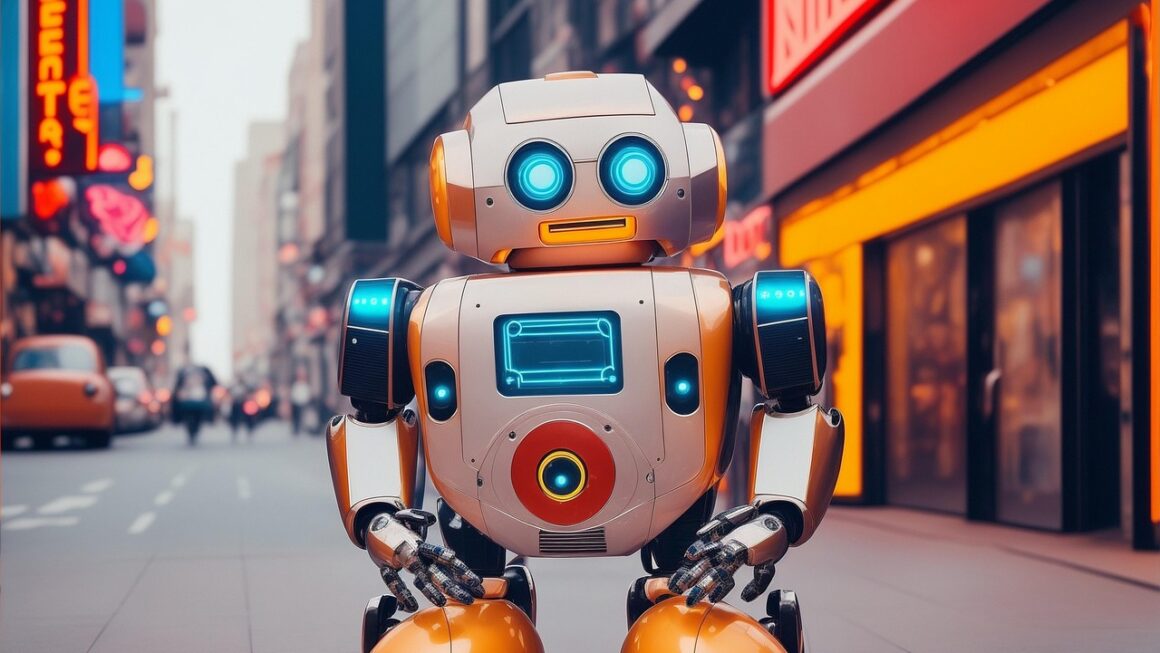Computer vision, once a realm of science fiction, is now a tangible and transformative technology reshaping industries across the globe. From self-driving cars navigating complex cityscapes to medical imaging diagnosing diseases with unparalleled accuracy, the ability for computers to “see” and interpret images and videos is revolutionizing how we interact with the world. This blog post will delve into the core concepts, applications, and future trends of computer vision, providing a comprehensive understanding of this exciting field.
What is Computer Vision?
Definition and Core Principles
Computer vision is a field of artificial intelligence (AI) that enables computers to “see,” interpret, and understand images and videos in a way similar to humans. It involves developing algorithms and models that can extract meaningful information from visual data, allowing machines to perform tasks such as object detection, image classification, facial recognition, and more. At its core, computer vision seeks to automate and surpass human vision capabilities in specific domains.
- Image Processing: Prepares the raw image data for analysis through techniques like noise reduction, sharpening, and contrast enhancement.
- Feature Extraction: Identifies salient features within an image, such as edges, corners, and textures, which are crucial for understanding the image’s content.
- Object Detection: Locates and identifies specific objects within an image or video.
- Image Classification: Assigns a label or category to an entire image based on its content.
- Semantic Segmentation: Divides an image into regions and assigns a semantic label to each region, providing a pixel-level understanding of the scene.
How Does Computer Vision Work?
Computer vision systems typically involve several key steps:
Deep learning, particularly CNNs, has become a dominant approach in computer vision due to its ability to automatically learn complex features from raw pixel data. These networks are trained on massive datasets to recognize patterns and make accurate predictions.
Key Applications of Computer Vision
Healthcare
Computer vision is revolutionizing healthcare by improving diagnostic accuracy, enhancing treatment planning, and automating routine tasks.
- Medical Imaging Analysis: Analyzing X-rays, CT scans, and MRIs to detect anomalies and assist in diagnosis. For example, computer vision algorithms can detect early signs of cancer in medical images, improving patient outcomes.
- Robotic Surgery: Guiding surgical robots with enhanced precision and control.
- Drug Discovery: Identifying potential drug candidates through image-based screening of cellular activity.
- Telemedicine: Enabling remote patient monitoring and consultations through image analysis. A practical example is analyzing skin conditions from patient-submitted photos to provide preliminary diagnoses.
Automotive
Self-driving cars are perhaps the most well-known application of computer vision in the automotive industry. These vehicles rely on a combination of cameras, sensors, and computer vision algorithms to perceive their surroundings and navigate safely.
- Autonomous Driving: Enabling vehicles to perceive and understand their environment, including lane detection, traffic sign recognition, and pedestrian detection.
- Advanced Driver-Assistance Systems (ADAS): Providing features such as lane departure warning, adaptive cruise control, and automatic emergency braking.
- Driver Monitoring Systems: Monitoring driver behavior and detecting drowsiness or distraction to prevent accidents.
Retail
Computer vision is transforming the retail industry by improving the customer experience, optimizing inventory management, and enhancing security.
- Automated Checkout: Enabling customers to checkout without scanning items by using cameras to identify products in their carts. Amazon Go stores are a prime example of this technology in action.
- Inventory Management: Monitoring shelf inventory and detecting stockouts using cameras and image analysis.
- Personalized Shopping: Analyzing customer behavior and preferences to provide targeted recommendations and promotions.
- Loss Prevention: Detecting shoplifting and other security threats using surveillance cameras and facial recognition. Statistics show that retailers can reduce losses by 10-15% using computer vision-based security systems.
Manufacturing
Computer vision is enhancing quality control, automating processes, and improving efficiency in manufacturing plants.
- Quality Inspection: Detecting defects and anomalies in manufactured products using cameras and image analysis. This can include identifying scratches, dents, or other imperfections on surfaces.
- Robotic Assembly: Guiding robots to perform precise assembly tasks with enhanced accuracy.
- Predictive Maintenance: Analyzing images of equipment to detect signs of wear and tear and predict potential failures.
- Process Optimization: Monitoring production processes and identifying opportunities for improvement.
Key Techniques in Computer Vision
Convolutional Neural Networks (CNNs)
CNNs are a type of deep learning model that is particularly well-suited for computer vision tasks. They consist of multiple layers of convolutional filters that automatically learn features from images.
- Convolutional Layers: Extract features from images by applying filters that detect patterns such as edges, corners, and textures.
- Pooling Layers: Reduce the spatial dimensions of the feature maps, reducing computational complexity and improving robustness.
- Activation Functions: Introduce non-linearity into the model, allowing it to learn complex patterns.
- Fully Connected Layers: Classify images based on the learned features.
Popular CNN architectures include AlexNet, VGGNet, ResNet, and Inception, each with its own strengths and weaknesses. Choosing the right architecture depends on the specific task and dataset.
Object Detection Algorithms
Object detection algorithms aim to identify and locate specific objects within an image or video.
- Region-Based CNNs (R-CNNs): Propose regions of interest in an image and then classify each region using a CNN.
- You Only Look Once (YOLO): A real-time object detection algorithm that divides an image into a grid and predicts bounding boxes and class probabilities for each grid cell.
- Single Shot Multibox Detector (SSD): Another real-time object detection algorithm that uses multiple convolutional layers to detect objects at different scales.
- Faster R-CNN: Improves upon R-CNN by using a region proposal network (RPN) to generate region proposals, making it faster and more accurate.
Image Segmentation Techniques
Image segmentation involves dividing an image into regions or segments and assigning a label to each segment.
- Semantic Segmentation: Assigns a semantic label to each pixel in an image, providing a pixel-level understanding of the scene. Common techniques include Fully Convolutional Networks (FCNs) and U-Net.
- Instance Segmentation: Identifies and separates individual instances of objects within an image. Mask R-CNN is a popular instance segmentation algorithm.
- Panoptic Segmentation: Combines semantic and instance segmentation to provide a complete and coherent understanding of a scene.
Challenges and Future Trends
Challenges in Computer Vision
Despite significant progress, computer vision still faces several challenges:
- Data Availability: Training deep learning models requires large amounts of labeled data, which can be expensive and time-consuming to acquire.
- Computational Resources: Training and deploying complex computer vision models can be computationally intensive, requiring specialized hardware such as GPUs.
- Robustness: Computer vision systems can be sensitive to variations in lighting, viewpoint, and occlusion.
- Bias: Training data can contain biases that can lead to unfair or discriminatory outcomes.
Future Trends in Computer Vision
The field of computer vision is rapidly evolving, with several exciting trends on the horizon:
- Self-Supervised Learning: Developing models that can learn from unlabeled data, reducing the need for large amounts of labeled data.
- Explainable AI (XAI): Making computer vision models more transparent and interpretable, allowing users to understand why a model made a particular decision.
- Edge Computing: Deploying computer vision models on edge devices, such as smartphones and cameras, to reduce latency and improve privacy.
- 3D Computer Vision: Developing models that can understand and reason about 3D scenes, enabling applications such as augmented reality and robotics.
- Generative Models: Using generative models, such as GANs (Generative Adversarial Networks), to generate realistic images and videos, which can be used for data augmentation or creative applications.
Conclusion
Computer vision is a powerful and rapidly evolving field with the potential to transform numerous industries. From healthcare and automotive to retail and manufacturing, computer vision is enabling new applications and improving existing processes. While challenges remain, ongoing research and development are paving the way for even more exciting advancements in the future. By understanding the core concepts, key applications, and future trends of computer vision, businesses and individuals can leverage this transformative technology to unlock new opportunities and solve complex problems. As computational power increases and data becomes more readily available, the potential of computer vision is virtually limitless.




